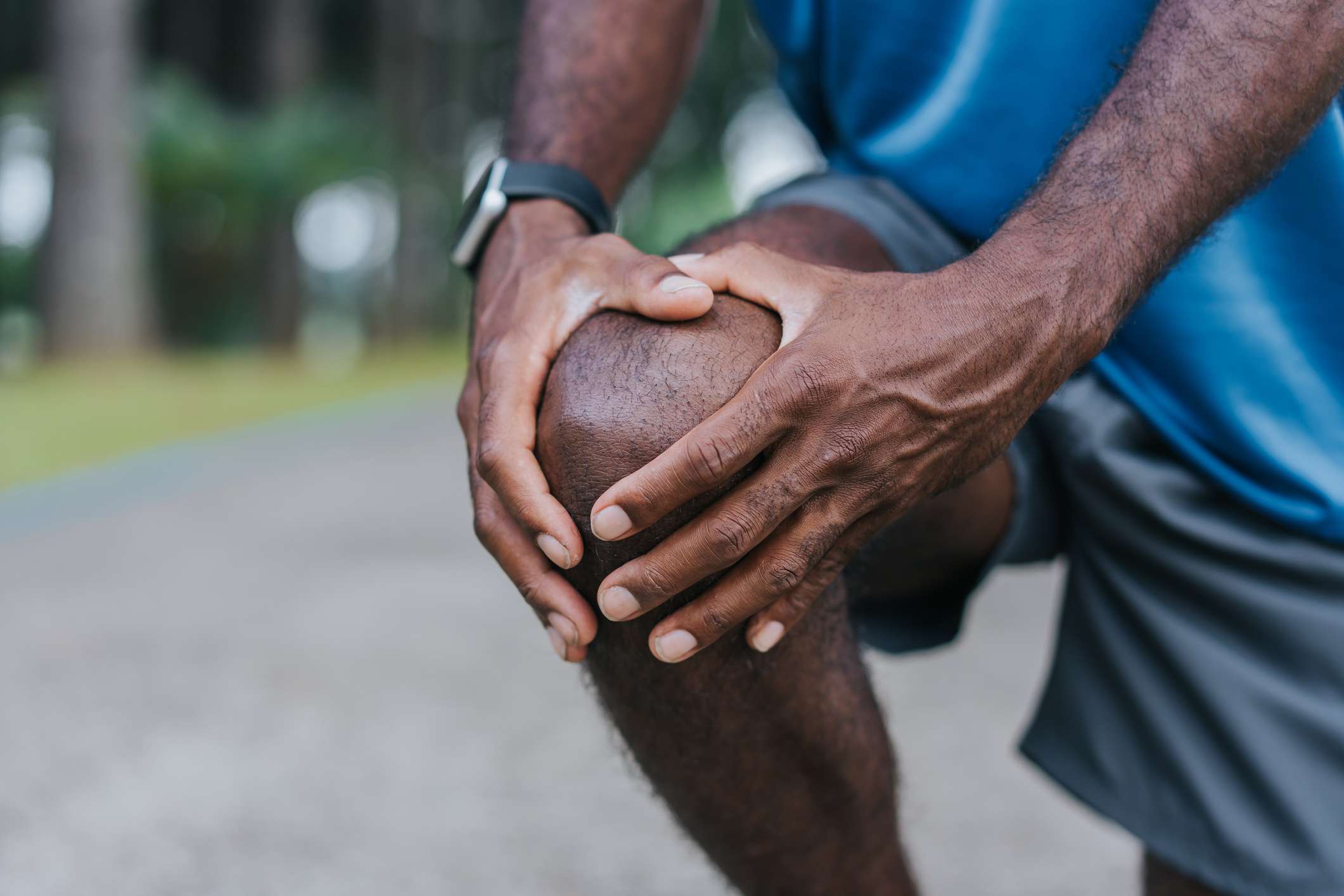
What is Chondromalacia Patellae? Chondromalacia patellae, often called runner's knee, is a condition where the cartilage on the underside of the kneecap softens and deteriorates. This issue is common among young athletes and active individuals, causing pain and discomfort in the front of the knee. Activities like running, climbing stairs, or sitting for long periods can worsen the symptoms. Diagnosing chondromalacia involves clinical exams and imaging techniques like MRI. Treatment ranges from physical therapy and lifestyle changes to surgical options in severe cases. Understanding this condition helps in managing and preventing knee pain effectively.
Key Takeaways:
- Chondromalacia patellae, or runner's knee, affects many active individuals aged 15 to 35. It causes dull, aching knee pain and may require treatments like exercises, ice application, and surgery.
- Accurate diagnosis and early intervention are crucial for managing chondromalacia patellae. Treatment options include physical therapy, lifestyle modifications, and surgical interventions for severe cases.
Understanding Chondromalacia Patellae
Chondromalacia patellae, often called runner's knee, is a common condition that affects many active individuals. Let's dive into the key facts about this knee issue.
-
Definition: Chondromalacia patellae is a condition where the cartilage on the underside of the kneecap softens and deteriorates.
-
Incidence: It affects about one in four people in the United States, making it a prevalent cause of knee pain.
-
Age Group: Most commonly seen in individuals aged 15 to 35, especially teenagers involved in sports.
-
Symptoms: The main symptom is a dull, aching pain around the knee, which worsens with activities like climbing stairs or sitting for long periods.
-
Causes: Often caused by a misaligned kneecap, leading to improper tracking and increased friction on the cartilage.
-
Pathophysiology: The cartilage undergoes softening, swelling, fraying, and erosion, along with hardening of the underlying bone.
Diagnosing Chondromalacia Patellae
Accurate diagnosis is crucial for effective treatment. Here are the methods and tools used to diagnose this condition.
-
Differential Diagnosis: It must be distinguished from other knee conditions like patellofemoral pain syndrome and patellar tendinopathy.
-
Diagnostic Procedures: Diagnosis is based on clinical symptoms and physical exams, with radiography, arthrography, and MRI confirming the condition.
-
MRI Findings: MRI is particularly effective, showing detailed images of cartilage changes and helping stage the condition.
-
Stages of Chondromalacia: The condition is staged from 1 to 4, with early stages showing mild changes and advanced stages showing severe degeneration.
-
Symptom Severity: Symptoms worsen as the condition progresses, leading to increased pain and reduced knee function.
Treatment Options for Chondromalacia Patellae
Treatment varies based on the severity of the condition. Here are the common approaches.
-
Conservative Measures: Includes exercises to strengthen the quadriceps, ice application, and pain medication.
-
Exercises: Strengthening the quadriceps and improving flexibility can help improve knee tracking and reduce friction.
-
Ice Application: Applying ice to the knee can reduce pain and inflammation, especially after physical activity.
-
Pain Medication: Over-the-counter medications like ibuprofen or acetaminophen can help manage pain.
-
Surgical Intervention: In severe cases, surgery may be needed to smooth the underside of the kneecap or realign the patella.
-
Prolotherapy: This involves injecting dextrose into the affected area to stimulate healing and improve pain levels.
Physical Therapy and Lifestyle Changes
Physical therapy and lifestyle modifications play a significant role in managing chondromalacia patellae.
-
Physical Therapy: Therapists use modalities like ultrasound, electrical stimulation, and manual therapy to improve knee function and reduce pain.
-
Activity Modification: Reducing stress on the knee by avoiding activities that exacerbate pain is essential.
-
Bracing: Wearing a knee brace can provide support and stability, helping to reduce pain and improve patella tracking.
-
Orthotics: Custom orthotics can help redistribute pressure on the knee, reducing friction on the cartilage.
-
Lifestyle Changes: Maintaining a healthy weight, avoiding overtraining, and incorporating low-impact activities can help prevent the condition.
-
Nutritional Factors: Adequate nutrition, including essential vitamins and minerals, is crucial for cartilage health.
Anatomy and Pathophysiology
Understanding the anatomy and pathophysiology of chondromalacia patellae helps in comprehending the condition better.
-
Hyaline Cartilage: This type of cartilage, found on the underside of the kneecap, is affected in chondromalacia patellae.
-
Cartilage Degeneration: The cartilage undergoes softening, swelling, fraying, and erosion, leading to its deterioration.
-
Sclerosis: The underlying bone may harden, a change often seen in advanced stages of the condition.
-
Clinical Presentation: Patients often present with dull, aching pain around the knee, recurrent fluid accumulation, knee instability, and a grinding sensation.
-
Diagnostic Imaging: Techniques like radiography, arthrography, and MRI are used to evaluate the condition.
-
Anterior Knee Pain Scale: This 13-item questionnaire assesses the severity of anterior knee pain and knee function.
-
Visual Analog Scale: A tool used to measure pain intensity, where patients rate their pain on a scale from 0 to 10.
-
KOOS Subscales: The Knee Injury and Osteoarthritis Outcome Score assesses patients' experiences with knee conditions over time.
Physical Examination and Measurements
Physical examinations and specific measurements help in diagnosing and understanding the severity of chondromalacia patellae.
-
Physical Examination Findings: Tests like anterior and posterior drawer tests, McMurray tests, and patellar compression help evaluate knee stability.
-
Popliteal Angle Measurement: Used to assess knee alignment, with an abnormal angle indicating patellar malalignment.
-
Q Angle Measurement: Evaluates the alignment of the quadriceps muscle and patella, with an abnormal angle contributing to patellar maltracking.
Causes and Risk Factors
Several factors contribute to the development of chondromalacia patellae. Understanding these can help in prevention and management.
-
Pathophysiology: Involves degenerative changes in the cartilage due to repetitive microtrauma, post-traumatic injuries, and certain medications.
-
Etiology: The condition is multifactorial, involving biomechanical factors, trauma, and degenerative changes.
-
Historical Background: The first description of pathological changes in the patellar cartilage was reported by Budinger in 1906.
-
Greek Origin: The term "chondromalacia" comes from Greek words meaning cartilage softening.
-
Common Causes: Repetitive knee bending, running, and other high-impact activities lead to microtrauma and cartilage wear.
-
Risk Factors: Poor biomechanics, patellar malalignment, and repetitive stress on the knee joint increase the risk of developing chondromalacia patellae.
Managing Symptoms and Improving Outcomes
Effective management of symptoms and improving outcomes involves a combination of treatments and lifestyle changes.
-
Symptom Triggers: Activities like climbing stairs, playing sports, and sitting for long periods can trigger symptoms.
-
Conservative Management: Includes exercises, ice application, and pain medication to alleviate symptoms and improve knee function.
-
Surgical Management: Involves procedures like arthroscopy to smooth the underside of the kneecap or realign the patella.
-
Prolotherapy Outcomes: Studies show significant improvements in pain levels and knee function with prolotherapy.
-
Physical Therapy Interventions: Techniques like ultrasound, electrical stimulation, and manual therapy help improve knee function and reduce pain.
-
Activity Modification Strategies: Avoiding activities that exacerbate pain and incorporating low-impact exercises can help manage symptoms.
-
Bracing and Orthotics: Provide support and stability to the knee, reducing pain and improving patella tracking.
-
Lifestyle Changes: Maintaining a healthy weight, avoiding overtraining, and incorporating low-impact activities can help prevent the condition.
-
Nutritional Factors: Essential vitamins and minerals like vitamin D, calcium, and omega-3 fatty acids are important for cartilage health.
-
Interprofessional Team Approach: Collaboration between healthcare providers, physical therapists, and other specialists ensures comprehensive care and optimal outcomes for patients with chondromalacia patellae.
Final Thoughts on Chondromalacia Patellae
Chondromalacia patellae, often called runner's knee, is a common cause of knee pain, especially in young, active folks. It involves the softening and breakdown of cartilage under the kneecap. Symptoms include dull, aching pain that worsens with activities like climbing stairs or sitting for long periods. Diagnosis typically involves clinical exams and imaging like MRI. Treatment ranges from conservative methods like physical therapy, ice, and pain meds to surgical options for severe cases. Strengthening exercises, lifestyle changes, and sometimes bracing or orthotics can help manage symptoms. An interprofessional team approach ensures comprehensive care, improving outcomes for those affected. Understanding the causes, symptoms, and treatments can help individuals manage this condition effectively, keeping them active and pain-free.
Frequently Asked Questions
Was this page helpful?
Our commitment to delivering trustworthy and engaging content is at the heart of what we do. Each fact on our site is contributed by real users like you, bringing a wealth of diverse insights and information. To ensure the highest standards of accuracy and reliability, our dedicated editors meticulously review each submission. This process guarantees that the facts we share are not only fascinating but also credible. Trust in our commitment to quality and authenticity as you explore and learn with us.


